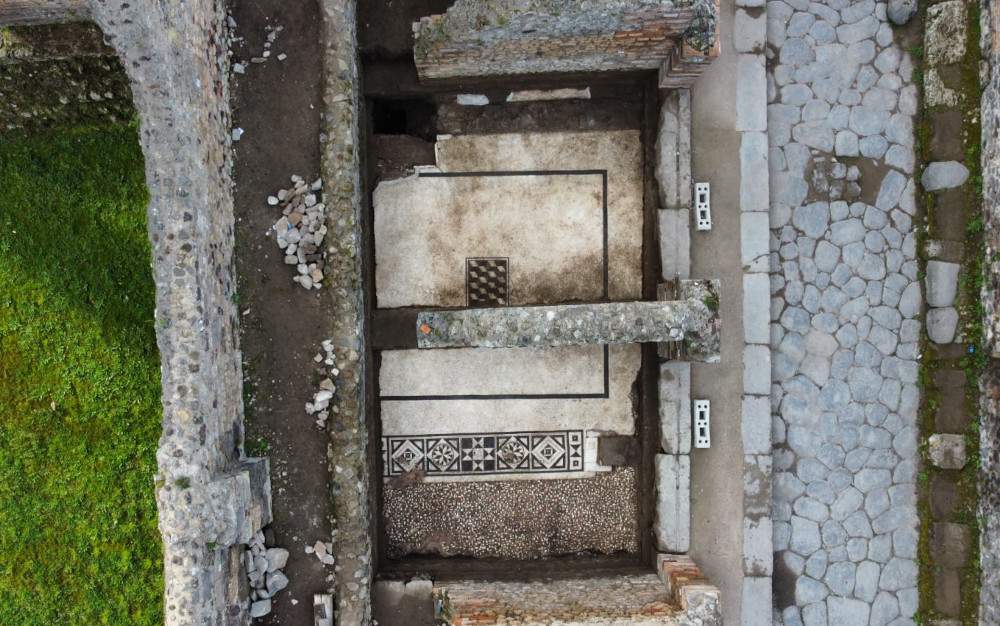Mosaic floor of an older house emerges at Stabian baths
Investigations to study the earlier building phases of the large Stabian Baths complex, located on Pompeii’s central street, namely Via dell’Abbondanza, have unearthed the mosaic floor of the hall of anolder dwelling, which was obliterated to make way for part of the baths and workshops after the earthquake in 62 AD.
The discovery came as part of a research project and related excavation campaign at the Stabian Baths entrusted by Pompeii Archaeological Park to the Freie Universität Berlin with the collaboration of theUniversity of Naples L’Orientale.
Launched in March, the ongoing investigations aim to clarify some aspects related to the chronological phases and planimetric organization of the gymnasium sector of the baths, which has already been investigated, as well as to complete the study of the plan of the pre-existing house, which was transformed after the earthquake of 62 AD.
"It is a proof of how much there is still to be discovered in the already excavated part of Pompeii, explained director Gabriel Zuchtriegel. “The Stabian baths were excavated in the 1950s, but only now is the whole complex history of the block in the centuries before the last phase of the city’s life coming to light. Thanks to new research by the University of Berlin and the Orientale University of Naples, we can now begin to rewrite the history of the block, including a further chapter, that of a sumptuous domus with exceptional mosaics and spacious rooms, which occupied the western part of the baths area until a few decades before the eruption in 79 AD.” “Even the Pompeii we thought we already knew is a discovery that continues,” the director concludes.
Excavation essays were conducted in the western area of the present bath complex and specifically in three tabernae located along the Lupanare alley, in the service corridor behind the natatio (pool) and the nymphaeums of the baths, in the gymnasium and at the original entrance to the male sector of the baths on Via dell’Abbondanza, which was closed after the earthquake.
The mosaic floor was found in the area of the tabernae, below the floor level found after the eruption at a depth of about half a meter.
The floor was white mosaic bordered by a black band with a central, polychrome emblem. The emblem in fact has a geometric pattern of perspective cubes, made of black, white and green tiles, bordered by a double red and black band. The decorative motif is well known from the opus sectile pavements of the cella of the temple of Apollo, the tablinum of the house of the Faun, or an exedra of the house of Triptolemus, cases in which the motif is extended over almost the entire floor surface. In the house of the Stabian baths, however, the motif is made only in the small central, mosaic tile, as is the case in other, also sectile, Roman contexts, such as the house of the Gryphons on the Palatine.
The new investigations have enabled a better understanding of the building’s floor plan, dating from the middle decades of the first century B.C., which covered an area of about 900 square meters, and consisted of an entrance hall, a large atrium surrounded by cubicula (bedrooms), tablinum ( small study), flanked by the recently discovered hall, and finally peristyle (colonnaded garden), characterized by a large portico with rich polychrome mosaic flooring.
 |
| Mosaic floor of an older house emerges at Stabian baths |
Warning: the translation into English of the original Italian article was created using automatic tools. We undertake to review all articles, but we do not guarantee the total absence of inaccuracies in the translation due to the program. You can find the original by clicking on the ITA button. If you find any mistake,please contact us.




























